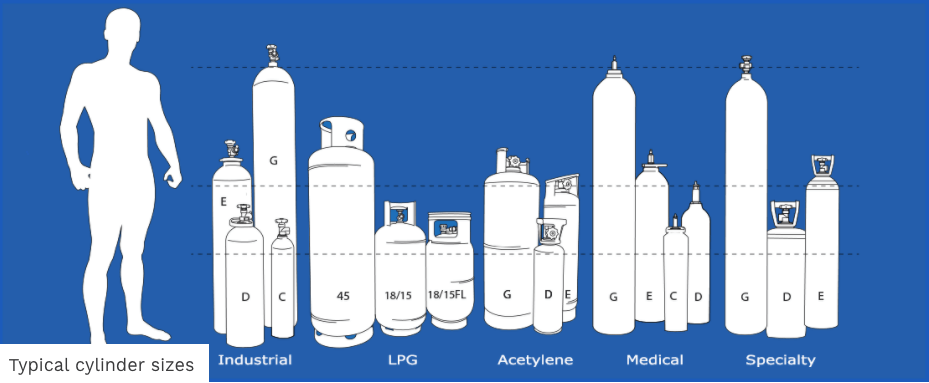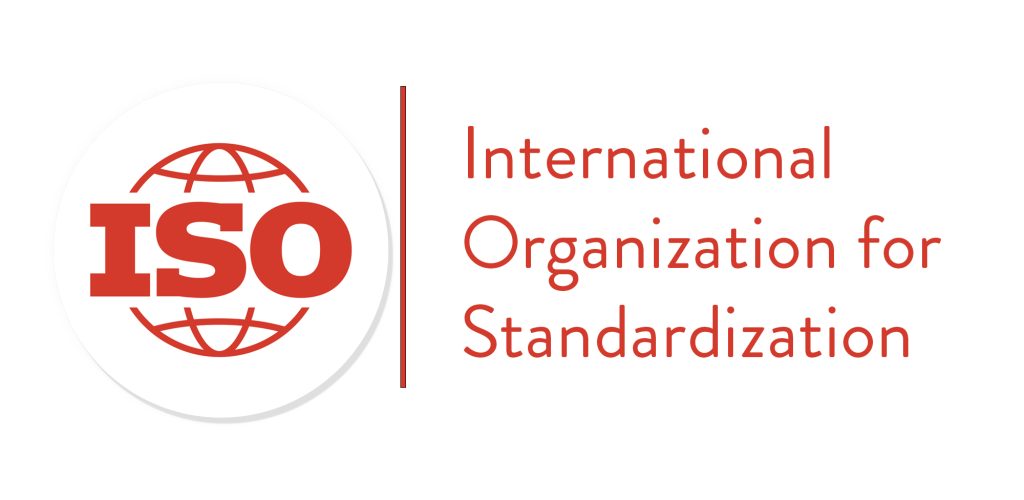Table of Contents
ISO vs. DOT: CO2 Cylinder Safety Standards That Actually Matter for Your Business

The call usually starts the same way. A procurement manager, proud of their recent find, tells me they’ve sourced a batch of CO2 cylinders from an overseas supplier for a fantastic price. They’re brand new, look great, and have all the “right” certifications. Then they send me the spec sheet, and I see the three letters that stop the conversation cold: I-S-O.
My name is Engineer Davies, and I head up cylinder compliance and safety here at Populargas. I’ve spent the better part of two decades looking at pressure vessels, and if there’s one area that trips up even savvy business owners and engineers, it’s the alphabet soup of CO2 cylinder safety standards. Specifically, the battle between DOT and ISO.
Getting this wrong isn’t just a paperwork headache. It’s a decision that can halt your operations, void your insurance, and, in a worst-case scenario, create a serious safety incident. So let’s cut through the noise. This isn’t a textbook definition; this is the on-the-ground reality of what these stamps mean for your gas supply chain.
The Lay of the Land: What Are We Even Talking About?
Think of it like this: The DOT standard is like your local state building code. It’s the absolute law of the land if you want to build and use a structure in that specific jurisdiction. The ISO standard is more like an internationally recognized architectural principle a highly respected, robust guideline on how to build a safe structure, which different countries can choose to adopt or reference.
- DOT: Stands for the U.S. Department of Transportation. Their regulations are federal law. When a cylinder has a DOT stamp, it means it was manufactured, tested, and certified to meet the specific, legally mandated requirements for being transported and used within the United States.
- ISO: Stands for the International Organization for Standardization. They create standards for just about everything to facilitate global trade and ensure a common language of quality. An ISO stamp on a cylinder (like ISO 9809 for seamless steel tubes) means it meets a globally recognized standard for quality and safety.
The critical mistake is assuming they are interchangeable. They are not.
The DOT Standard: The Non-Negotiable Rule for the USA
Here in the States, the Pipeline and Hazardous Materials Safety Administration (PHMSA), a part of the DOT, governs everything that moves with compressed gas. If a CO2 cylinder is going to be filled, shipped on a truck, or even carried across your facility on a forklift, it falls under their jurisdiction.
When you look at a DOT-compliant cylinder, you’ll see specific markings like DOT-3AL for aluminum cylinders or DOT-3AA for seamless steel. These aren’t just suggestions; they are legal classifications that dictate everything about that cylinder’s life:
- Manufacturing Process: The exact material composition, wall thickness, and manufacturing techniques are rigidly defined.
- Pressure Testing: Each cylinder undergoes a battery of brutal tests, including a hydrostatic test where it’s filled with water to 5/3rds of its working pressure to ensure its integrity.
- Traceability: Every DOT cylinder has a serial number, a manufacturing date, and the manufacturer’s mark, creating a clear chain of custody.
- Requalification: DOT regulations mandate periodic re-testing (usually every 5 or 10 years, marked by a new date stamp) to ensure it’s still safe for service.
I can’t stress this enough: for businesses operating within the United States, the DOT stamp is your golden ticket. It’s the only universally accepted mark that allows any gas filler, from a major industrial supplier down to the local homebrew shop, to legally fill your cylinder. No DOT stamp, no fill. It’s usually that simple.
The ISO Standard: The Global Player

So, where does ISO fit in? ISO standards are excellent. In many cases, the technical requirements of an ISO standard can be just as, or even more, stringent than the corresponding DOT regulation. They are the backbone of international gas transportation and are accepted in Europe, Asia, and many other parts of the world.
The problem is that “accepted in Europe” doesn’t mean a thing to the highway patrol officer inspecting a truck in Ohio or the OSHA inspector walking through your plant in Texas.
An ISO-only certified cylinder one that lacks any DOT markings—was not built under a DOT-approved manufacturing process and has not been certified for use in the American regulatory system. Bringing a container full of these cylinders into the US is easy; they’re just empty metal vessels at that point. The moment you try to get one filled with CO2, you hit a brick wall.
The Big Exception: When Worlds Collide with a “Special Permit”
Now, for every hard-and-fast rule, there’s an exception that makes things complicated. This is where procurement managers can get into trouble. Yes, there is a way to use certain internationally manufactured cylinders in the U.S.
This is done through what’s called a “UN pressure receptacle” marking, which is often based on an ISO standard. These cylinders can be filled and transported in the U.S. only if they are manufactured under a specific Special Permit issued by the DOT. This permit essentially says, “We (the DOT) have reviewed this specific ISO-based design and manufacturing process from this specific facility and have deemed it equivalent to our domestic standards.”
These cylinders will have a “UN” marking instead of a “DOT” one, along with the associated ISO standard (e.g., ISO 9809-1) and often the USA/##### Special Permit number.
Here’s the danger: A supplier might tell you a cylinder “meets ISO standards, which are accepted in the US.” This is a dangerously misleading half-truth. It’s only accepted if it’s part of that official Special Permit program. A generic ISO-stamped cylinder without the UN markings and the corresponding DOT exemption is just a fancy, unusable paperweight once it’s on US soil.
Beyond the Stamp: The Practical Realities for Your Business
Let’s move past the regulations and talk about what this means for your budget and operations.
- The Filler Refusal: This is the most immediate problem. Your business relies on a steady supply of CO2. You send your newly acquired, cheap ISO cylinders to your gas supplier for filling. Their fill plant manager takes one look, sees no DOT stamp, and rightfully refuses to touch them. Their business and their employees are not allowed to fill non-compliant cylinders. Suddenly, your “cost-saving” purchase has completely shut down your CO2 supply chain.
- The Liability Nightmare: Imagine an incident. A cylinder fails, property is damaged, or worse, someone is injured. The first thing any investigator or insurance adjuster will do is look at the equipment. If that cylinder is a non-compliant ISO vessel, the legal and financial fallout can be catastrophic. Your insurance claim could be denied, and your company will be exposed to significant OSHA fines and litigation. The compliance stamp is your first line of defense.
- Total Cost of Ownership: That great upfront price on the ISO cylinder evaporates quickly. Best case? You have to pay to ship the empty cylinders back to the supplier, hopefully for a refund. Worst case? You’re stuck with a pile of scrap metal you have to pay to dispose of. A slightly more expensive, fully compliant DOT cylinder has a predictable 30+ year lifespan with regular requalification. It’s an asset. The wrong cylinder is a liability from day one.
The Engineer’s Verdict: Keep It Simple and Safe
So, which CO2 cylinder safety standards do you need?
- For 99% of businesses operating solely within the United States, the answer is unequivocally DOT. Don’t overcomplicate it. Don’t chase a few percentage points of savings. Sourcing DOT-3AL or DOT-3AA cylinders ensures universal acceptance, straightforward compliance, and peace of mind.
- For multinational corporations with complex global logistics, this is where UN/ISO cylinders under a DOT Special Permit can make sense. But this requires a high level of logistical expertise to manage and ensure every cylinder is properly certified for every jurisdiction it enters. This is not a strategy for cutting costs; it’s a strategy for managing a global fleet.
The stamp on a cylinder isn’t just a bit of engraved text. It’s a legal and safety guarantee. It tells you that the vessel containing gas at 800+ psi was built and tested to withstand the rigors of the real world. When it comes to pressure, taking shortcuts isn’t just bad business it’s dangerous.
Frequently Asked Questions (FAQs)
1. Can my local gas supplier fill an ISO-certified CO₂ cylinder?
Usually no. In the U.S., most fillers can only fill cylinders with valid DOT (or approved UN/ISO under special permit) markings.
2. How can I tell if my cylinder is DOT or ISO certified?
Check the crown near the valve: “DOT–3AA / DOT–3AL” etc. for U.S. spec, “ISO 9809 / ISO 7866” for ISO, and “UN” markings for UN-approved designs.
3. Do ISO and DOT cylinders follow the same hydro-test rules?
Not always. DOT cylinders follow U.S. requalification intervals and must be tested at DOT-certified facilities; ISO-only cylinders follow the rules of the country or system where they’re approved.
4. Is one standard safer than the other?
Both aim at high safety. The key is legal compliance in your market a perfectly good ISO cylinder is still the wrong choice if your local law requires DOT.



